
In today’s rapidly evolving industries, competitive intelligence (CI) is essential for businesses looking to stay ahead of emerging trends, track competitor strategies, and optimize R&D investments. Whether you’re monitoring industry trends, tracking competitor innovations, or evaluating new technologies, staying informed can determine your success. This article will explain what competitive intelligence is, how to conduct a structured CI analysis, and how to solve common challenges step by step with real-world case studies.
What Is Competitive Intelligence?
In highly competitive industries, missing a key market development or a breakthrough technology could put your business at a disadvantage. Competitive intelligence (CI) refers to the systematic collection, analysis, and application of competitive market intelligence data to inform business strategies, R&D decisions, and investment planning. It helps businesses:
- Identify emerging trends before they become mainstream
- Monitor competitor strategies and R&D activities
- Assess market opportunities for new products or technologies
- Make data-driven decisions to stay ahead of industry shifts
Patsnap Eureka integrates massive datasets to help businesses and researchers make informed decisions.
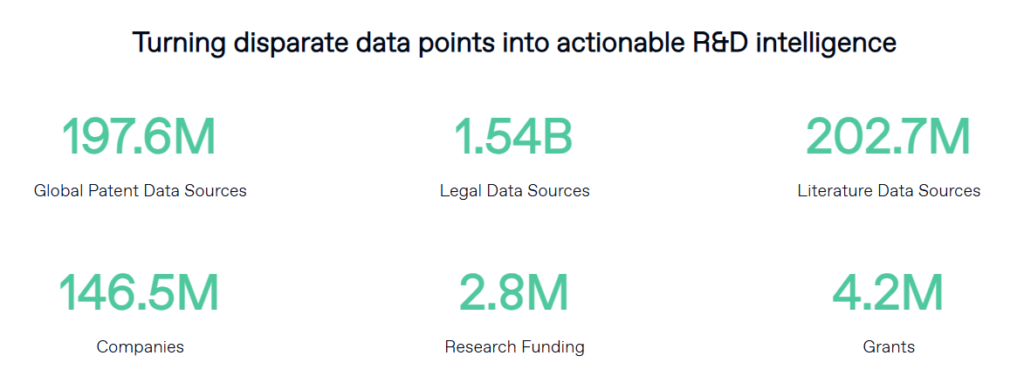
However, gathering and analyzing vast amounts of data manually is time-consuming. This is where PatSnap Eureka comes in, transforming the way businesses conduct competitive intelligence.
Common Challenges in Competitive Intelligence
While traditional business competitive intelligence tools focus on financial data and market trends, they fail to provide:
- Deep insights into R&D and innovation trends – Limited tracking of patent filings, research grants, and technology breakthroughs
- Technology-driven competitor intelligence – No structured way to analyze scientific advancements and IP strategies
- Holistic competitive product intelligence – Lack of technical problem-solving insights and innovation benchmarks
PatSnap Eureka fills this gap by offering a next-generation approach to technology intelligence.
How to Conduct Competitive Intelligence Analysis(Step-by-Step)
Eureka’s Quick Research tool allows you to generate comprehensive research reports within minutes. Instead of spending weeks reading industry news, patents, and technical literature, Eureka compiles key insights in a structured format, helping you quickly evaluate technological feasibility, market demand, and commercialization potential.
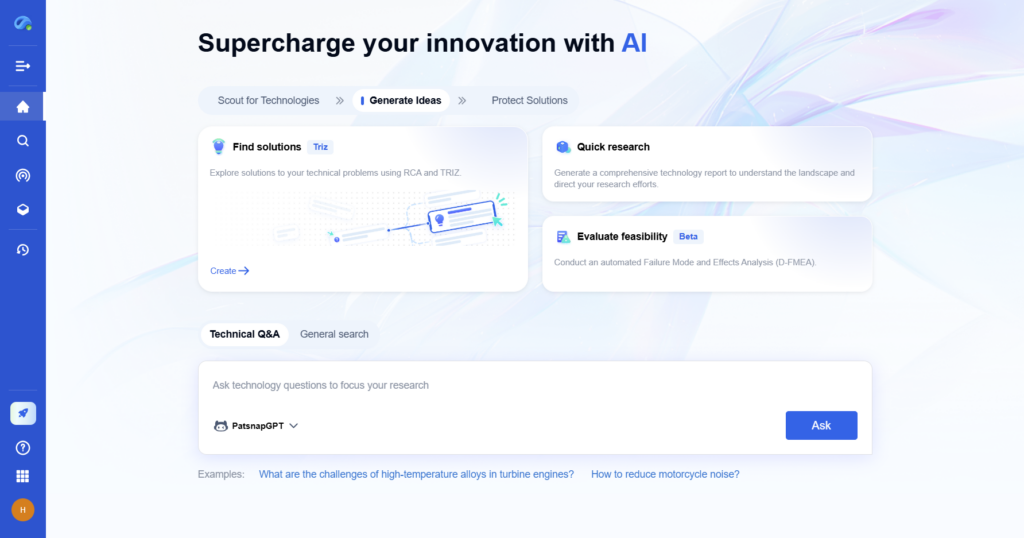
Step 1: Identify Key Competitors & Technology Trends
Before conducting competitive intelligence, organizations must clearly define what they want to analyze. The objectives should be based on business priorities, technological advancements, and industry threats.
Key Focus Areas for CI Objectives
- Market Trends: Identify emerging industry shifts, new regulations, and disruptive technologies.
- Competitor Innovations: Analyze product development, patent filings, and research breakthroughs.
- Technology Disruptions: Track new scientific discoveries, alternative materials, and advancements in R&D.
- Investment and M&A Activity: Monitor strategic acquisitions and funding in key sectors.
How PatSnap Eureka Helps (Fast-Charging EV Example)
- AI-powered market demand analysis tracks EV adoption growth and highlights consumer expectations for ultra-fast charging solutions.
- Patent landscape mapping detects new battery chemistries (silicon anodes, solid-state electrolytes) that enable faster charging.
- R&D trend analysis uncovers innovations in cooling systems and charging station infrastructure for high-power charging.
- Investment tracking identifies Tesla, Hyundai, and StoreDot’s billion-dollar investments in rapid charging technologies.
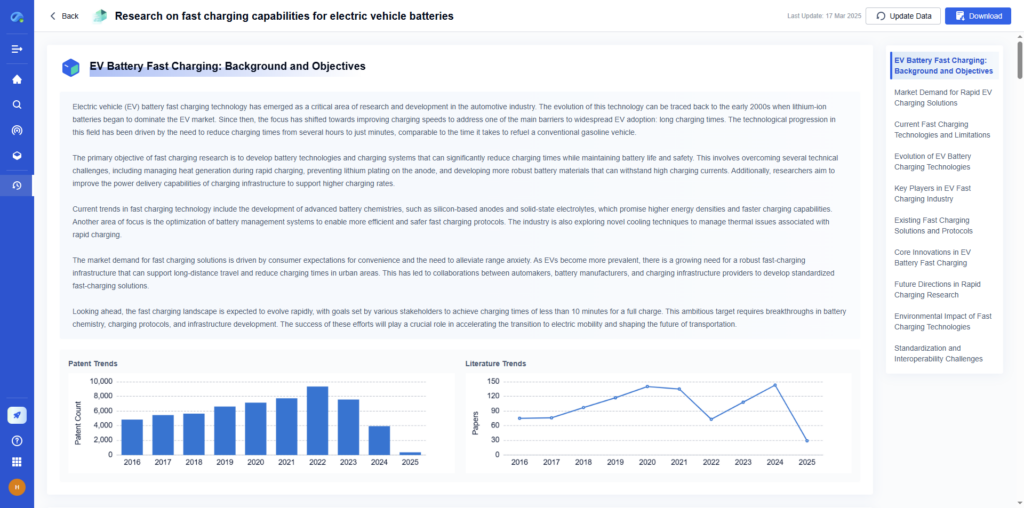
Step 2: Analyze Competitor R&D and Patent Strength
Gathering comprehensive data from multiple sources is crucial for effective CI. Traditional methods rely on manual research, but PatSnap Eureka automates this process with AI-driven data aggregation.
Types of Competitive Intelligence Data to Collect
- Patent Data: Identifies emerging technologies and key innovators in fast-charging solutions.
- Scientific Literature & Technical Papers: Tracks advancements in battery cooling, high-energy anodes, and charging protocols.
- Market Reports & Industry News: Provides insights into consumer demand, regulatory policies, and infrastructure expansion.
- Investment & Financial Data: Highlights funding trends and strategic M&A activity.
- Legal & Litigation Tracking: Monitors patent disputes over proprietary fast-charging technologies.
How PatSnap Eureka Helps (Fast-Charging EV Example)
- Investment analysis shows Ford’s multi-billion-dollar funding for extreme fast-charging infrastructure.
- Patent analysis on ultra-fast charging reveals Hyundai’s 400V/800V dual architecture, allowing for multi-speed fast charging.
- Scientific research tracking identifies StoreDot’s silicon-anode battery breakthrough, which enables 5-minute charging.
- Competitive benchmarking compares Tesla’s Supercharger network with CCS and CHAdeMO fast-charging protocols.
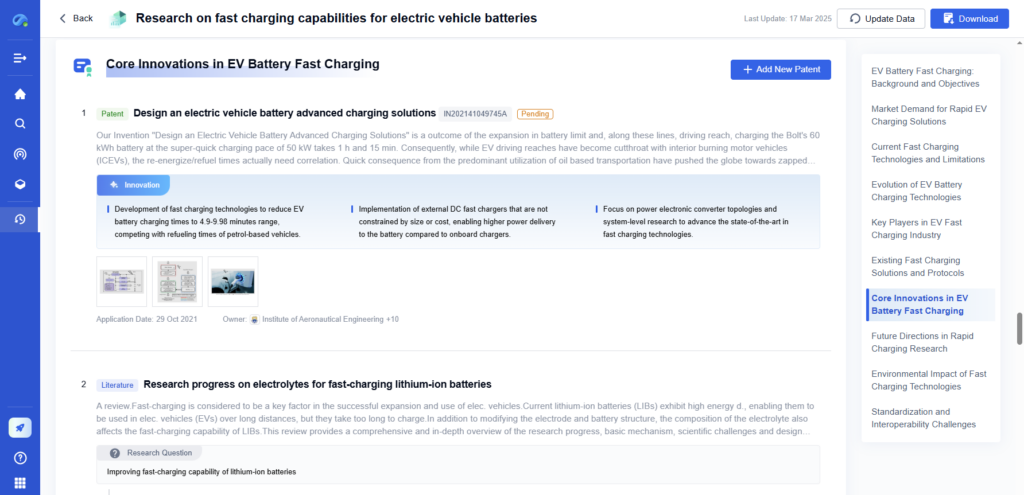
Step 3: Analyze Competitor Strategies
After collecting data, businesses must compare, benchmark, and assess competitor strengths, weaknesses, and innovation directions.
Key Competitor Intelligence Metrics
- Patent Portfolio Strength: How many fast-charging patents does each competitor hold?
- R&D Investment Trends: Where is capital being allocated for next-gen charging solutions?
- Technology Roadmap: Which automakers are developing solid-state or silicon-anode batteries for rapid charging?
- Legal Risks & Patent Disputes: Are companies facing litigation over fast-charging IP?
- Partnerships & M&A: Who is forming alliances for next-generation battery production?
How PatSnap Eureka Helps (Fast-Charging EV Example)
- Litigation alerts uncover Nissan’s legal dispute over proprietary fast-charging technologies.
- Patent similarity analysis shows Hyundai’s E-GMP platform competing with Tesla’s proprietary Supercharger network.
- R&D funding tracking highlights Bosch’s 350 kW ultra-fast charging technology development.
- M&A tracking reveals GM’s strategic acquisition of battery startups for fast-charging breakthroughs.
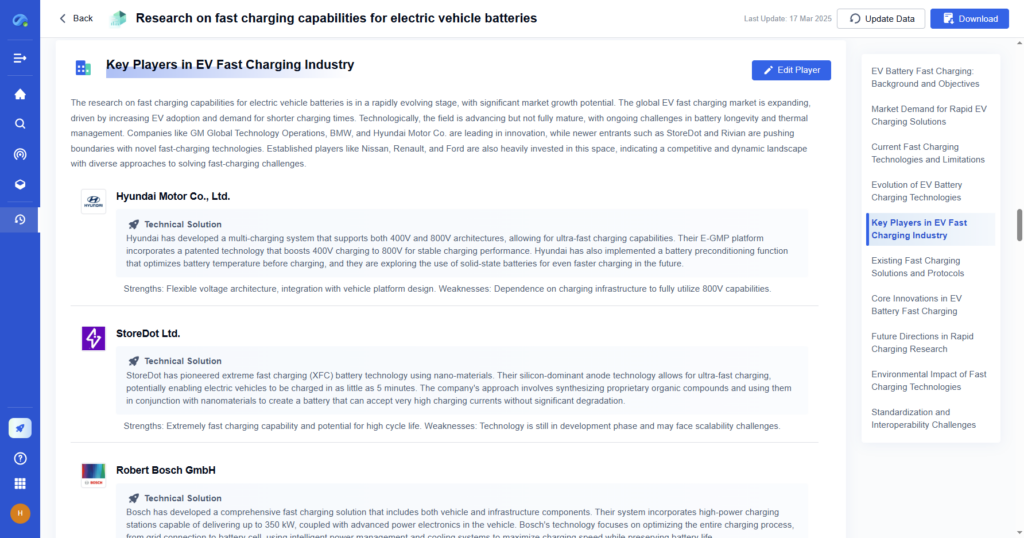
Step 4: Generate a Competitive Intelligence Report
Structuring findings into an actionable report helps decision-makers understand key insights.
Key Sections of a Competitive Intelligence Report
- Executive Summary: Overview of key trends and technology gaps.
- Market & Industry Trends: Growth forecasts, consumer demand, and regulation impacts.
- Competitor Intelligence: R&D activities, patent filings, and strategic partnerships.
- Risk & Opportunity Assessment: Threats from patent disputes and competitive gaps.
- Strategic Recommendations: Investment priorities and R&D focus areas.
How PatSnap Eureka Helps (Fast-Charging EV Example)
- Technology roadmaps visualize the future of 5-minute charging and the role of silicon anode batteries.
- Automated CI report generation compiles real-time insights on battery innovations, charging infrastructure, and competitor M&A.
- Patent clustering technology categorizes fast-charging patents by chemistry, cooling solutions, and charging speed.
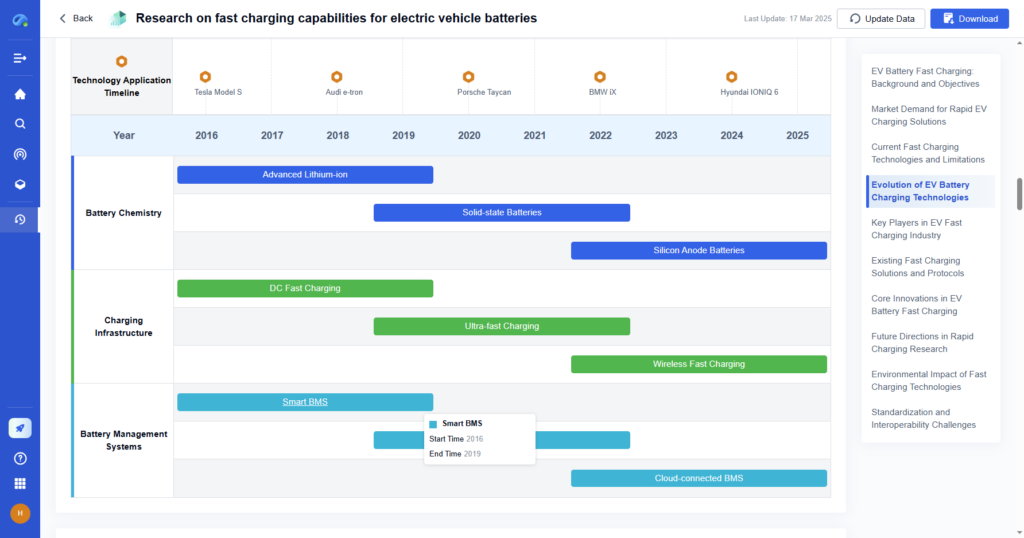
Step 5: Apply Findings to Business Strategy
The final step is translating intelligence into actionable business decisions.
Key Business Applications of Competitive Intelligence
- R&D Prioritization: Shift focus to high-growth areas such as solid-state fast-charging batteries.
- M&A Strategy: Identify high-value battery startups for strategic acquisitions.
- Market Entry & Expansion: Adapt charging infrastructure based on consumer demand insights.
- Product Roadmap Adjustments: Align battery research with long-term EV adoption trends.
- Risk Mitigation: Use legal intelligence to avoid patent infringements.
How PatSnap Eureka Helps (Fast-Charging EV Example)
- Technology landscape visualization shows the impact of emerging electrolyte chemistries on high-power charging systems.
- Predictive analytics suggests that next-gen silicon-anode batteries will disrupt traditional lithium-ion charging speeds.
- Competitor tracking alerts notify automakers of new entrants in ultra-fast charging solutions.
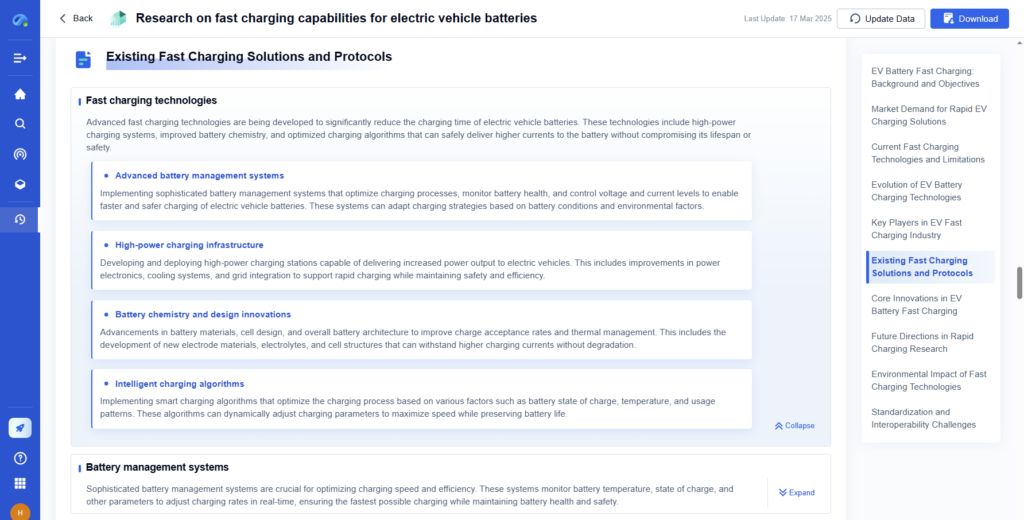
Why PatSnap Eureka Is the Best Competitive Intelligence Tool for You
Unlike standard business competitive intelligence tools, Eureka is specifically designed for technology-driven industries.
- Comprehensive R&D intelligence – Tracks patents, scientific publications, and innovation trends
- Technology-driven competitor intelligence – Provides a deeper understanding of R&D strategies and emerging tech
- Automated competitive intelligence reports – Saves time by generating real-time, AI-driven insights
- Patent & legal risk tracking – Helps protect intellectual property and mitigate infringement risks
Who Should Use PatSnap Eureka?
- R&D Teams & Engineers: Stay ahead of emerging technologies
- Tech Investors & Analysts: Discover high-value investment opportunities
- Corporate Strategy Teams: Make smarter R&D and M&A decisions
PatSnap Eureka is the ultimate competitor intelligence tool for tech-driven businesses. Unlock the future of innovation today!
Conclusion
Traditional competitive intelligence reports are limited to market trends and financial insights. PatSnap Eureka goes beyond market intelligence to deliver real-time insights into competitor R&D, patents, and innovation ecosystems.
By following this step-by-step competitive intelligence analysis, businesses can leverage PatSnap Eureka to:
- Make data-driven decisions based on scientific and technological trends
- Gain a true competitive edge in R&D, innovation, and business strategy
- Stay ahead of competitor intelligence by tracking investment, M&A, and legal risks
Ready to elevate your competitive intelligence strategy? Try PatSnap Eureka today!


